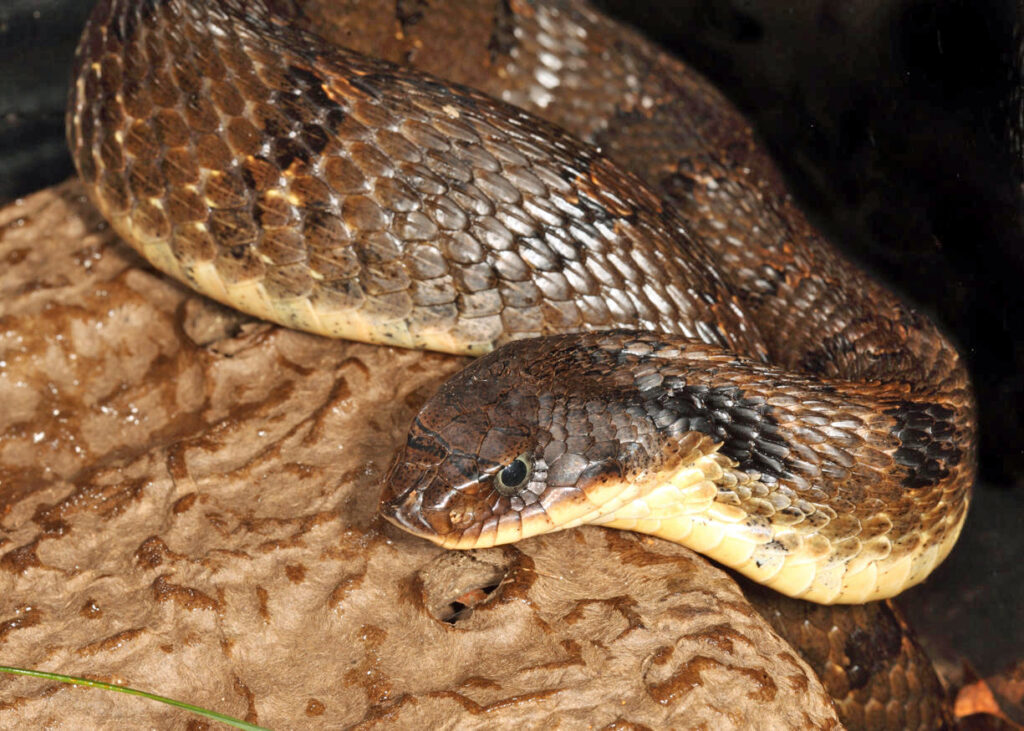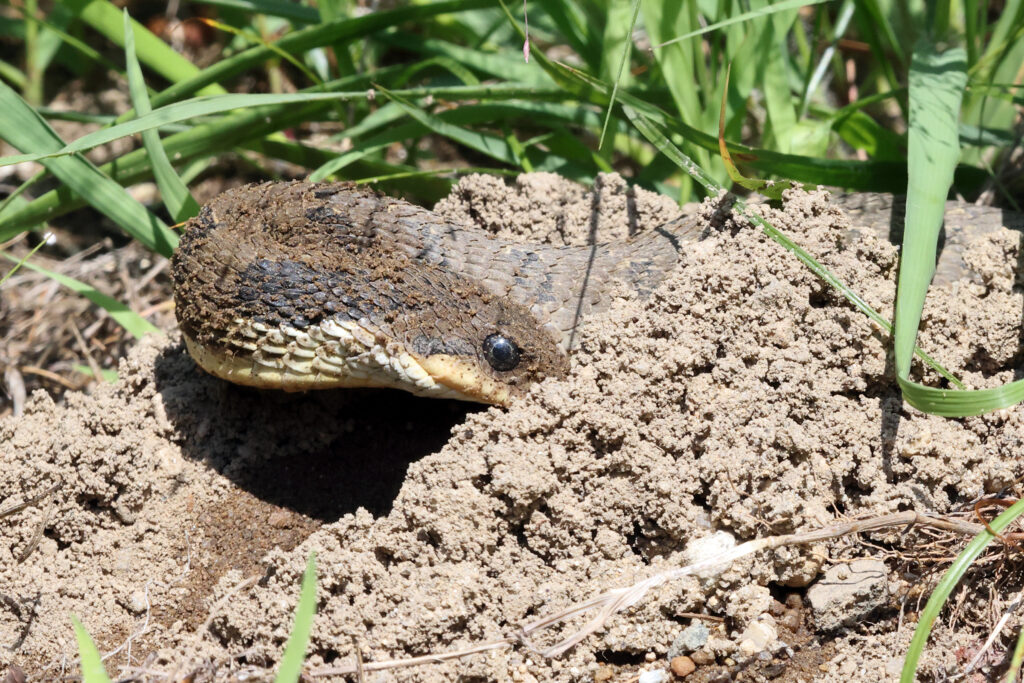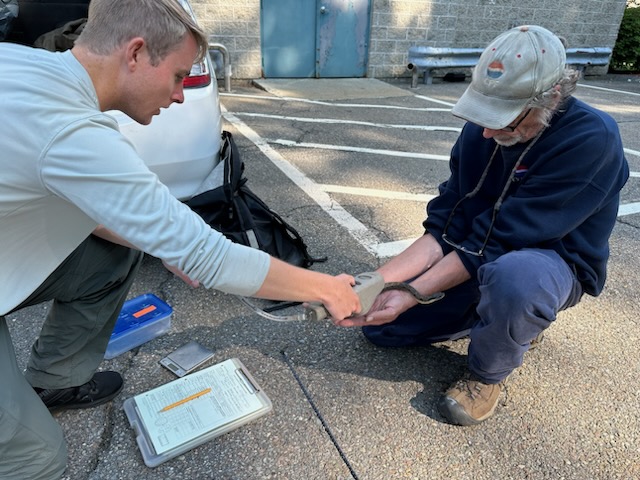Have you ever heard of the eastern hog-nosed snake? Without the venomous bite of timber rattlesnakes and copperheads or the ubiquity of garter and water snakes, these interesting serpents often go overlooked. That’s a real shame, in our opinion, because hog-nosed snakes are fascinating and unique animals unlike any other species in Massachusetts.

What makes hog-nosed snakes special? To start with, there’s that adorable snub-nosed profile. Their unusual head shape serves an important purpose, allowing hognoses to use their snout like a shovel to dig burrows in sandy soil. Hog-nosed snakes are adept diggers, and they favor sandy habitats dominated by pitch pine and scrub oak, so it’s not surprising that they are most often found in the southeastern part of the state. Because of their limited habitat and their vulnerability to human-associated predators and road mortality, eastern hog-nosed snakes are protected as a Species of Special Concern in Massachusetts.

Eastern hog-nosed snakes also have a distinct flair for the dramatic. When threatened, hognoses flatten their head and neck to present a profile like a cobra’s and utter a loud warning hiss (the only species in Massachusetts that actually hisses out loud!) If this bluff doesn’t suffice, a hognose may strike at someone who harasses or threatens it, but even these lunges are just an act. Not only are hog-nosed snakes non-venomous, they seldom even open their mouths when striking in self-defense! If these displays don’t dissuade a predator, hog-nosed snakes have one more trick up their sleeves: playing dead. Rolling onto its back, lolling its tongue from its open mouth, the frightened hognose will even void its stomach and bowels to sell the illusion of death with unappetizing olfactory elements.
Still not convinced? Hog-nosed snakes also have a very unusual diet, specializing in pursuing and eating toads (though they will eat other prey). Hognose snakes are immune to the toads’ defensive venom, and they even have a specialized pair of extra-long teeth at the back of their mouth to defeat the toads’ other protective adaptation: inflating to make themselves hard to swallow. By puncturing the inflated toad, a hognose can finish its meal with relative ease.
This year, Zoo New England has been involved in an exciting effort to document and protect an unusual population of this rare snake in central Massachusetts. We are partnering with three skilled, volunteer herpetologists from the area: Jennifer Pettit, Mike Zabarowski, and Mark Lotterhand, who have done almost all of the field work and, to date, have found 10 individual eastern hognose snakes; a large number for so elusive a species and in an area where the snakes were thought to be extremely rare. In addition, our partners have, rather incredibly, found 3 hognose snake nests. Jimmy Welch of Zoo New England has supported our partners by individually tagging each snake with passive integrated transponder (PIT) tags to identify them and we are all working with MassWildlife to help protect the hognose snake eggs and young from inadvertent human-related harm.

Together with our dedicated partners, we look forward to expanding our joint conservation efforts for eastern hognose snakes in north central Massachusetts in 2024. We recently met with Massachusetts state herpetologist, Mike Jones, of MassWildlife and will be working on a proposed conservation management plan for this unique and seldom seen reptile in our project area.
